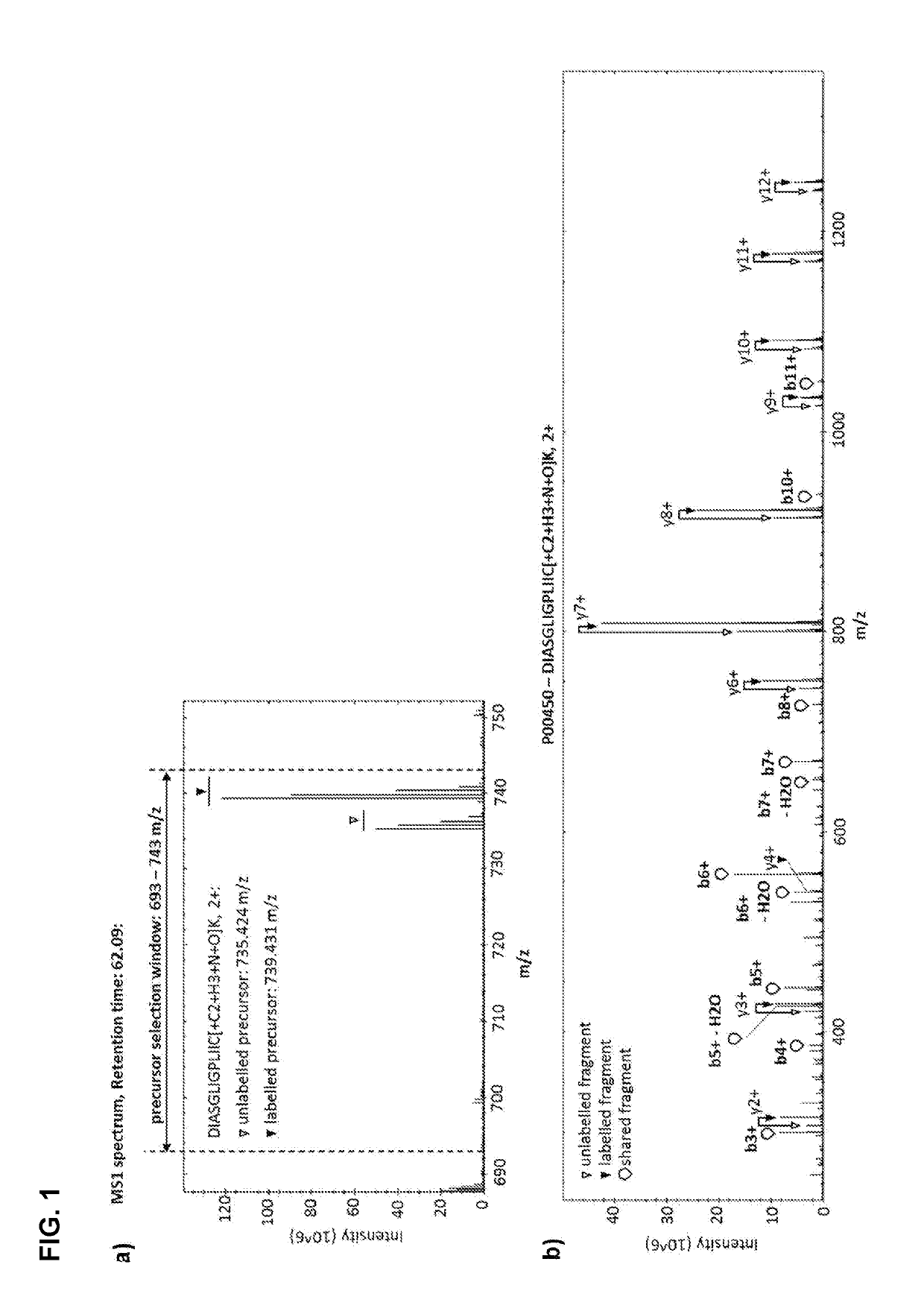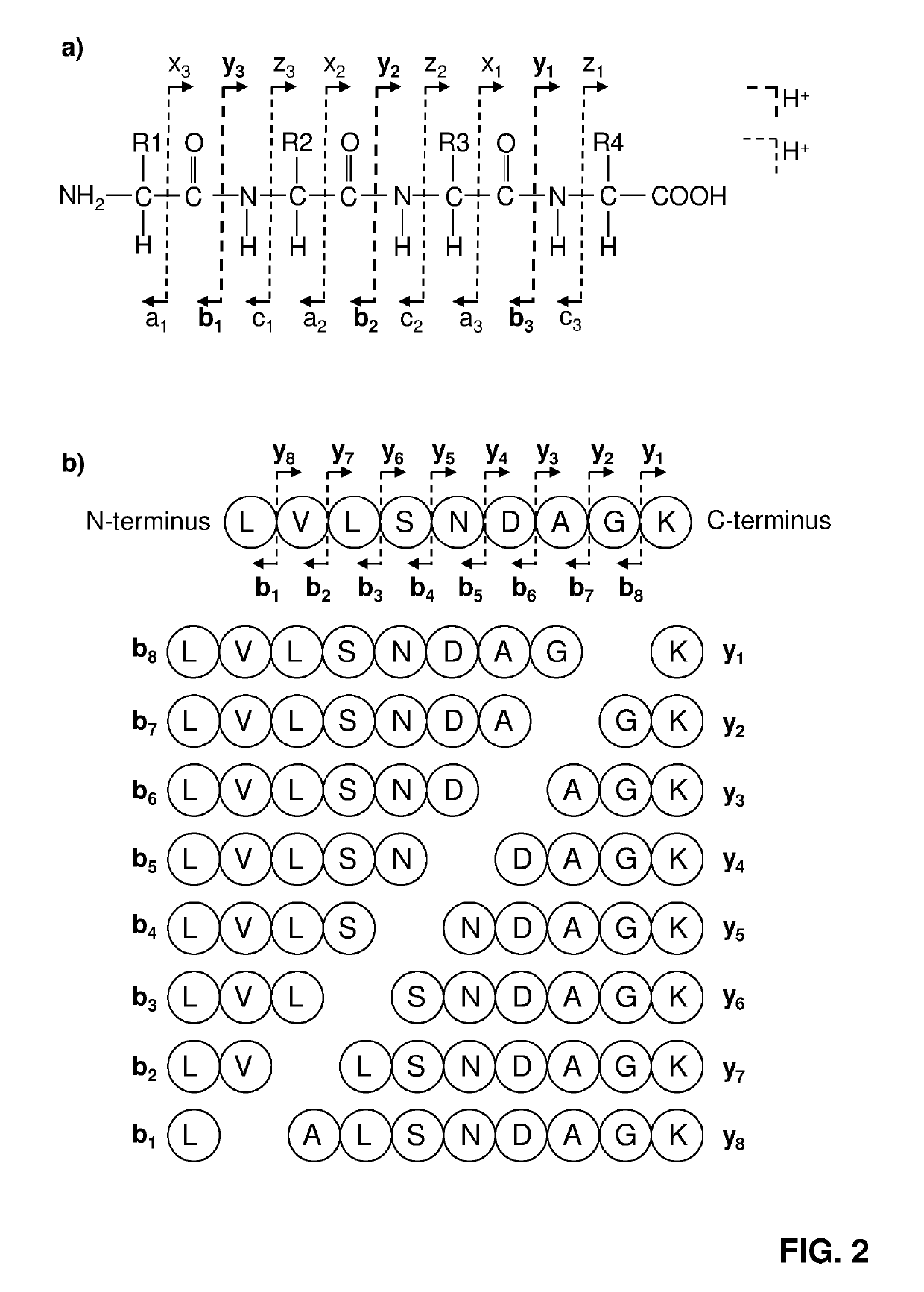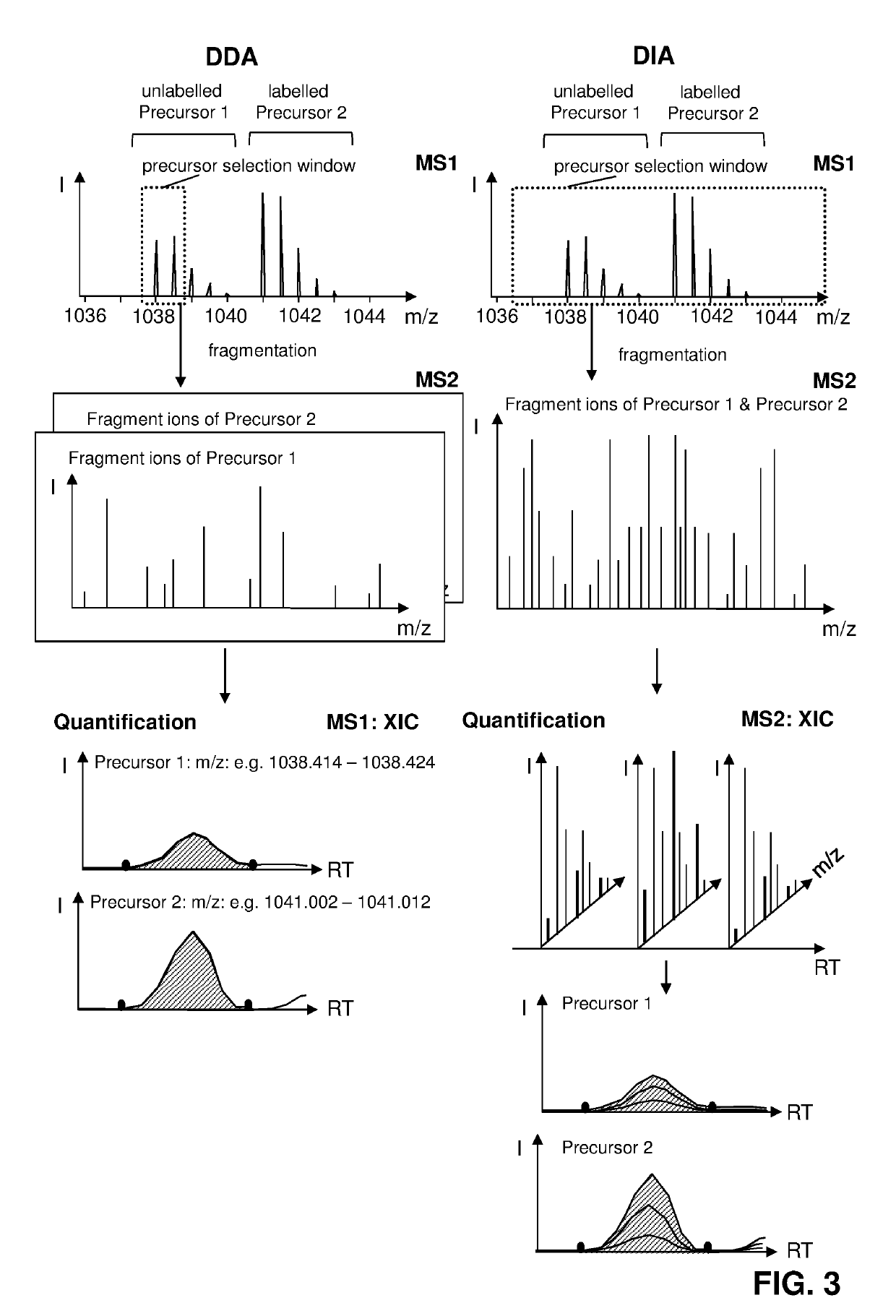Labelled compounds and methods for mass spectrometry-based quantification
a mass spectrometry and compound technology, applied in mass spectrometry analysis, post translational modification detection, material testing goods, etc., can solve the problems of further complicating data analysis and hampering peptide identification, and achieve the lowest label cost, easy to obtain or incorporate, and low rate
- Summary
- Abstract
- Description
- Claims
- Application Information
AI Technical Summary
Benefits of technology
Problems solved by technology
Method used
Image
Examples
example 1
Quantification of Human Plasma Proteins Using Selectively Double-Labeled Peptides
[0164]See FIG. 11 for a scheme of the workflow.
[0165]Sample Preparation:
[0166]Human plasma will be digested using in solution digestion: 10 μl of plasma will be diluted in 75 μl 10 M urea and 0.1 M ammonium bicarbonate. The samples will be reduced with 5 mM TCEP for 1 h at 37° C. Subsequently, the plasma will be alkylated with 25 mM iodoacetamide for 20 min at 21° C. The samples will be diluted to 2 M urea and digested with trypsin at a ratio 1:100 (enzyme to protein) at 37° C. for 15 h. The samples will be centrifuged at 20,000 g at 4° C. for 10 min. The peptides will be desalted using C18 MacroSpin columns from The Nest Group according to the manufacturer's instructions. After drying, the peptides will be resuspended in 1% ACN and 0.1% formic acid.
[0167]Preparation of Labeled Reference Peptides:
[0168]The reference peptide mix will contain synthetic double-labeled peptides covering amino acid sequences...
example 3
Method for Selecting Cheapest Amino Acid for Labeling and Estimate Total Label Costs
[0173]A method was created to select optimal amino acids and positions for labeling. Furthermore, the method estimated the total label cost for double-labeling a set of peptides. It offered the following features:
[0174]In a first step three pieces of input data were accepted, the first containing the label prices, i.e. the price of amino acids containing heavy elemental isotopes as stated by a certain vendor, the second containing the molecular weight of all 20 amino acids, and the third being a spectral library for human plasma.
[0175]In a second step the label prices and the amino acid molecular weight data was used to estimate the cost per mmol of each labeled amino acid. Furthermore, all unique, unmodified peptide sequences were extracted from the spectral library.
[0176]In a third step a value for nglobalMaxVal was specified. Herein nglobalMaxVal defines a positive integer that is set by the exper...
example 4
Exclusion of Modified Amino Acids and Analysis of Fragment Collisions
[0181]A method for the selection of labels and label positions will be created which will offer the following features in addition to the label cost calculation features of Example 3:
[0182]After the optimization of label positions according to total label cost as in Example 3, the present method will in a first aspect select the amino acid with the next lowest label cost for labeling if the selected amino acid is an amino acid that is often post-translationally modified in the experimental setup. In a second aspect the method will simulate the fragment masses that would be produced by the selected double-labeled peptide sequences. Based on the simulation the method will further analyze how many fragment collisions occur, i.e. how many fragment ions from the double-labeled precursor overlap with any other fragment ions of the unlabeled precursor. If the number lies above a certain threshold, the amino acid with the ...
PUM
| Property | Measurement | Unit |
|---|---|---|
| length | aaaaa | aaaaa |
| length | aaaaa | aaaaa |
| mass spectrometry | aaaaa | aaaaa |
Abstract
Description
Claims
Application Information
 Login to View More
Login to View More - R&D
- Intellectual Property
- Life Sciences
- Materials
- Tech Scout
- Unparalleled Data Quality
- Higher Quality Content
- 60% Fewer Hallucinations
Browse by: Latest US Patents, China's latest patents, Technical Efficacy Thesaurus, Application Domain, Technology Topic, Popular Technical Reports.
© 2025 PatSnap. All rights reserved.Legal|Privacy policy|Modern Slavery Act Transparency Statement|Sitemap|About US| Contact US: help@patsnap.com



